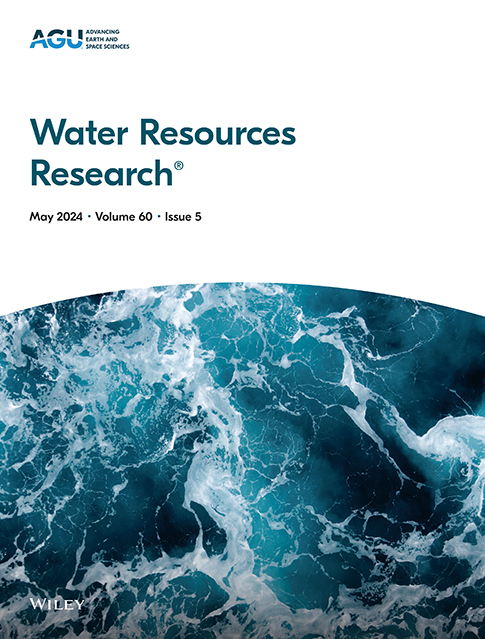Origin of Water and Hydrochemical Components of Lakes: Example From the Mu Us Desert, Northwest China
IF 4.6
1区 地球科学
Q2 ENVIRONMENTAL SCIENCES
引用次数: 0
Abstract
Desert lakes are sparsely distributed in arid/semi-arid regions of the world and are crucial to desert hydro-ecosystem. However, the sources of water and dissolved components in desert lakes, especially the inputs from anthropogenic activities, remain to be fully understood. This study used water stable isotopes, self-organizing maps, and principal component analysis to explore the origins of lake water in the Mu Us desert, northwest China, where intensive coal mining activities exist. Results show that all desert lakes were distinguished into two types: (a) Type A, dominated by Ca-HCO3 type with a relatively low TDS (192–405 mg/L) and the highest concentration of NO3− (1.14–5.94 mg/L); (b) Type B, characterized by Na-HCO3 type with a highest content of SO42– and TDS up to 159 and 1,207 mg/L, respectively. The water stable isotopic compositions in lake water of Type B are depleted compared to those of the lake water of Type A. A combined analysis of hydrochemistry of lake water, groundwater, and mine water suggest that the desert lakes have different sources: lake water of Type A originated from Quaternary groundwater discharge, while lake water of Type B was derived from the treated mine drainage (TMD) which led to higher TDS and SO42–. The hydrochemistry of Type A lakes was influenced by agricultural activities (fertilizer use and livestock manure), whereas the hydrochemistry in Type B lakes were mainly controlled by the infiltrated TMD nearby. This hydrochemical characterization approach may be helpful to understand the hydrology of desert lakes elsewhere.求助全文
约1分钟内获得全文
求助全文
来源期刊

Water Resources Research
环境科学-湖沼学
CiteScore
8.80
自引率
13.00%
发文量
599
审稿时长
3.5 months
期刊介绍:
Water Resources Research (WRR) is an interdisciplinary journal that focuses on hydrology and water resources. It publishes original research in the natural and social sciences of water. It emphasizes the role of water in the Earth system, including physical, chemical, biological, and ecological processes in water resources research and management, including social, policy, and public health implications. It encompasses observational, experimental, theoretical, analytical, numerical, and data-driven approaches that advance the science of water and its management. Submissions are evaluated for their novelty, accuracy, significance, and broader implications of the findings.
 求助内容:
求助内容: 应助结果提醒方式:
应助结果提醒方式:


